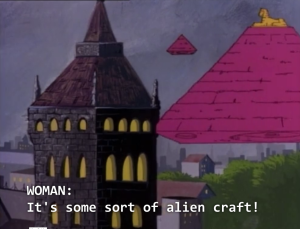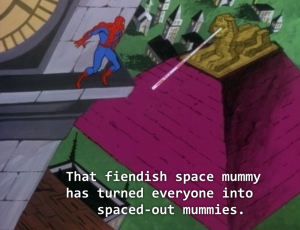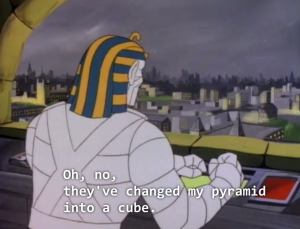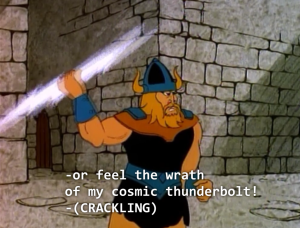I have written in the past about superheroes and archaeology, largely inspired by the papers given at the Monstrous Antiquities conference back in November. Today, I just want to point out that there is a surprising amount of archaeology in the 1979 Spider-Woman cartoon … or, well … sort of.
I don’t know if you’re familiar with the Spider-Woman cartoon, but it seems to have been largely an attempt to cash in on the popularity of Wonder Woman, right down to the spinning transformation, here called a “spider-spin.” And yeah, you know you’re back in the olden days when Marvel is trying to cash in on a DC property.
Anyway, the cartoon basically resembles what you’d get if you got one of the less grounded Bronze Age creators (poor old Bill Mantlo, perhaps, or maybe Bob Kanigher (I may mean Bob Haney)) and just fed them an absolute shitload of cough syrup and told them to have at it, oh, and to try to work in something educational to satisfy the FCC. Maybe the easiest way for you to see what I mean about this show’s bizarre mix of earnestness and foolery is just to watch an episode.
Our very first episode is “Pyramids of Terror,” and it kicks off with Spider-Man being in Egypt (for some reason) where he is captured by a villainous mummy. Spider-Woman, her bumbling sidekick and her plucky sidekick go off to Egypt following a series of mummy attacks, and then … erm …
It turns out, right, that these mummies came from space in their pyramid ships and were buried under the sands of Egypt lo these many years ago, and I guess they inspired ancient Egyptian culture, because why not? The classic motif of the Sphinx shooting beams out of its eyes is gone one better here — not only does it have eyebeams, but if the beams hit you, they turn you into a mummy!
Eventually, Spider-Woman realises that the motive force behind the alien spaceships is, no fooling, Pyramid Power and uses her webbing to turn the lead ship into a cube.
It’s like a checklist of pop culture Egypt:
- ambulatory mummy
- did ancient astronauts …?
- Pyramid Powah!
So this is all well and good, but what’s weird is that it keeps happening. Spider-Woman is a very globe-trotting sort of heroine, and she winds up in contact with a lot of past-type stuff.
She goes back to the 10th century to fight some Vikings:
Fights some Amazons in a vaguely Mexico-ish sort of Amazon temple thing:

And there’s a few more temples and castles as well. Apparently it all gets a bit more UFO-y in the later seasons, but I’m not there yet. I really just wanted to share that mummy episode with people because, you know, pink pyramid spaceship with sphinx-shaped mummy-ray turret.







